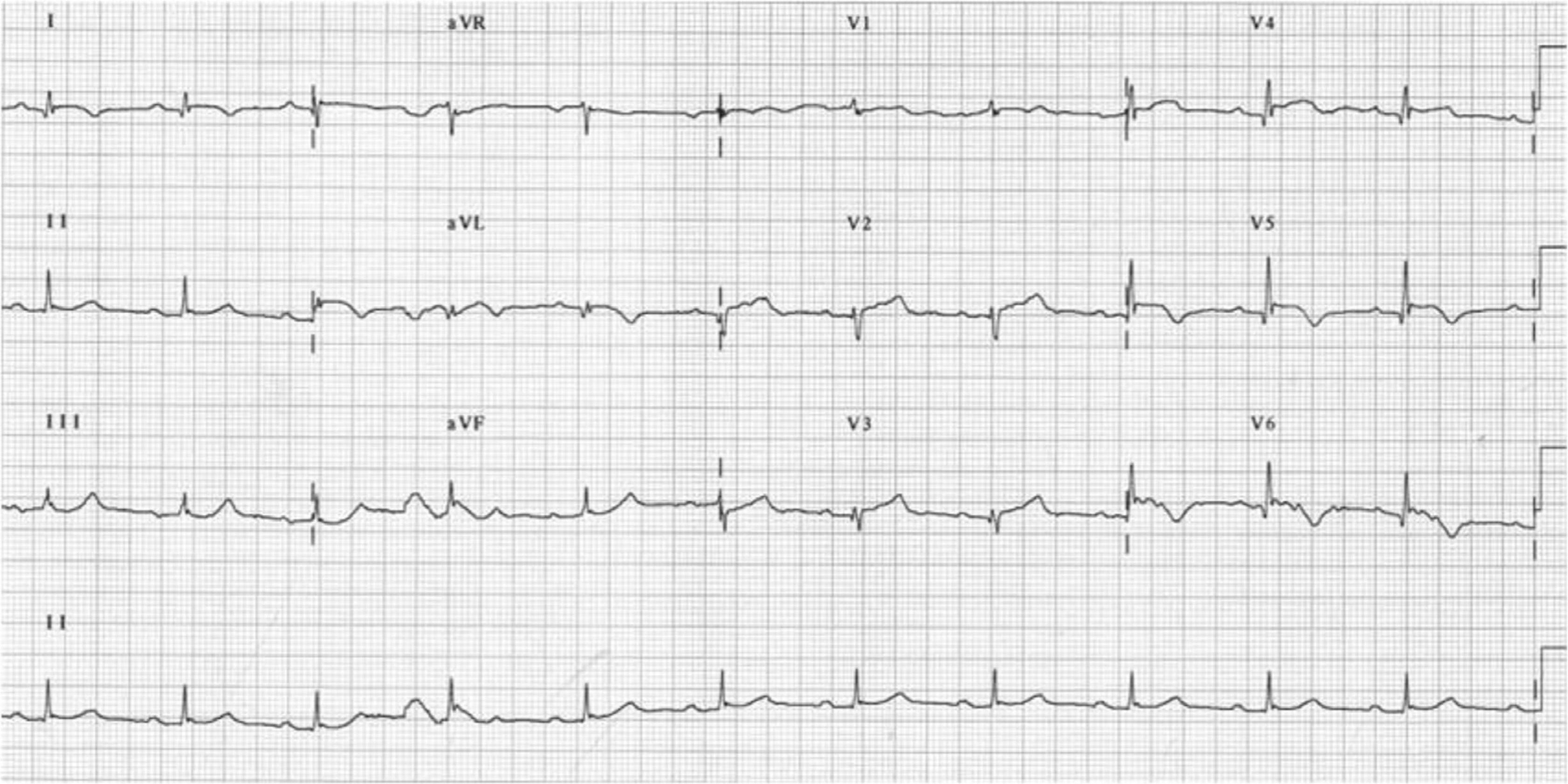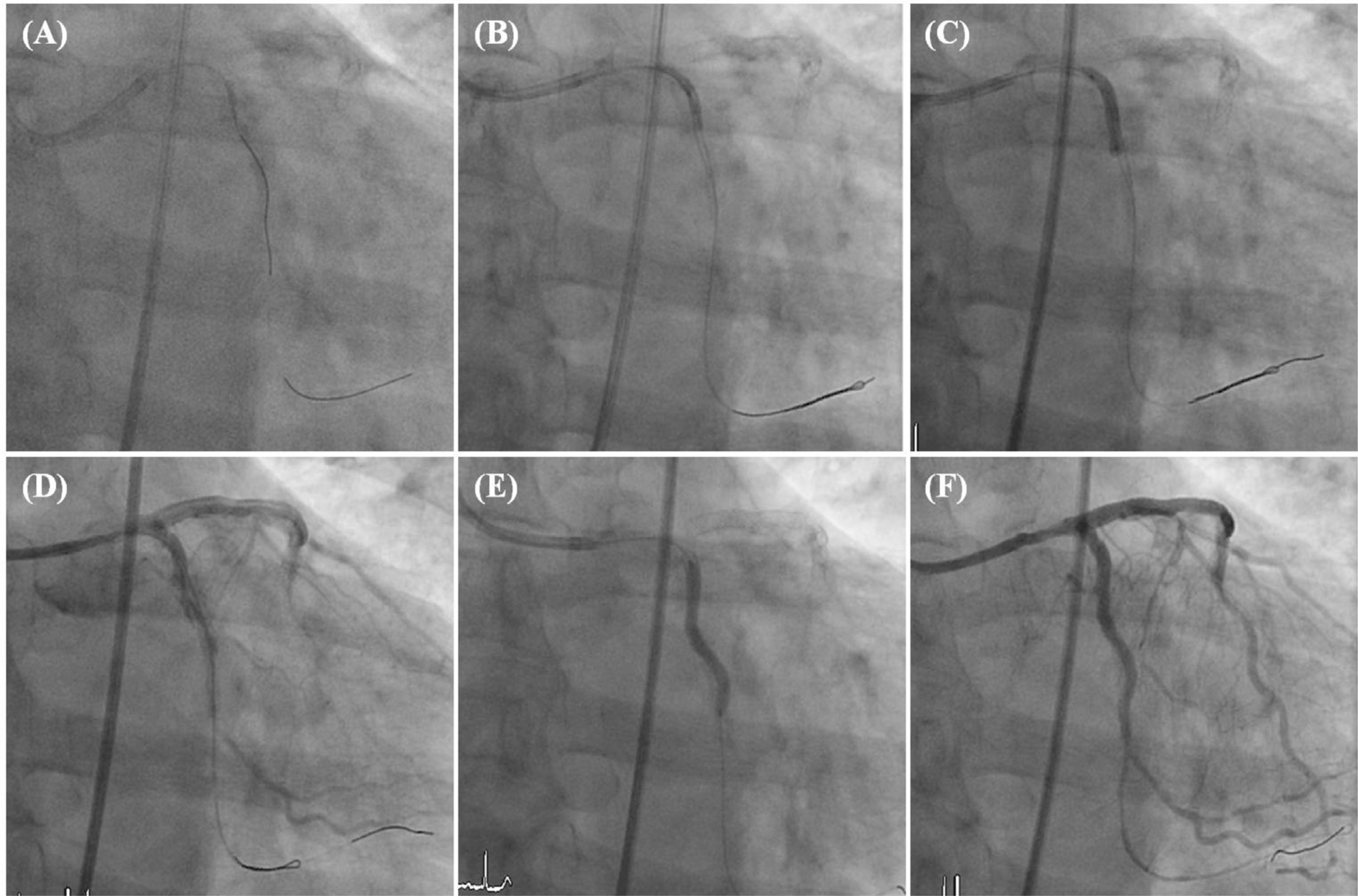Articles
- Page Path
- HOME > Kosin Med J > Volume 28(1); 2013 > Article
-
Case Report
Treatment of Stent Dislodgement Complicated by Coronary Artery Dissection using Parallel Wire Technique and Small Balloon - Su Young Kim, Seung-Hee Han, Kyung Han Kim, Moo Hyun Kim, Jong Sung Park
-
Kosin Medical Journal 2013;28(1):55-60.
DOI: https://doi.org/10.7180/kmj.2013.28.1.55
Published online: January 19, 2013
Department of Internal Medicine, College of Medicine, Dong-A University, Busan, Korea
- Corresponding author: Jong Sung Park, Department of Internal Medicine, College of Medicine, Dong-A University Hospital 1, 3-ga Dongdaesin-dong, Seo-gu, Busan 602-714, Korea TEL: +82-51-240-5040 FAX: +82-51-242-5852 E-mail: thinkmed@dau.ac.kr
• Received: August 16, 2012 • Accepted: October 17, 2012
Copyright © 2013 Kosin University School of Medicine Proceedings
This is an Open Access article distributed under the terms of the Creative Commons Attribution Non-Commercial License (http://creativecommons.org/licenses/by-nc/3.0/) which permits unrestricted non-commercial use, distribution, and reproduction in any medium, provided the original work is properly cited.
- 968 Views
- 4 Download
Abstract
- Stent dislodgement is a rare complication of complex percutaneous coronary artery intervention and is often associated with significant morbidity. We report a case of stent dislodgement complicated by coronary artery dissection and acute total occlusion of left circumflex coronary artery. Direct expansion of the dislodged stent was performed using parallel wire technique and small balloon. An overlapping stent was implanted for remained coronary artery dissection. Coronary artery flow was restored and ST segment elevation was normalized after successful intervention.
Fig. 1.Electrocardiogram after coronary artery dissection and acute total occlusion of left circumflex coronary artery showed ST segment elevation and T wave inversion in V4-V6, I, and aVL leads.


Fig. 2.(A) Dislodged stent (arrow) was remained in proximal LCX. (B) Magnified view of the dislodged stent of 2.75 X 24 mm in size (arrow). (C) Coronary angiography showed coronary artery dissection and total occlusion of proximal LCX. (D) Magnified view of the dislodged stent. A floppy tipped guide wire was inserted to the lumen of dislodged stent (within arrowheads). (E) However, the guide wire entered to the false lumen of distal LCX formed by dissecting intimal flap. (F) Another guide wire was inserted and two guide wires were advanced alternately by parallel wire technique. Finally, a guide wire found the true lumen of distal LCX. LCX: left circumflex coronary artery.


Fig. 3.(A) A guide wire in false lumen was reinserted to the true lumen (B) A small balloon was positioned within the dislodged stent and inflated. (C) Partially expanded dislodged stent was fully expanded by a balloon with larger diameter. (D) Coronary angiography after direct expansion of the dislodged stent showed partial restoration of distal LCX flow. (E) A overlapping stent of 2.5 X 32 mm in size was implanted to cover coronary artery dissection. (F) Distal LCX flow was fully recovered after coronary artery intervention. LCX: left circumflex coronary artery.


- 1.Bolte J, Neumann U, Pfafferott C, Vogt A, Engel HJ, Mehmel HC, et al. Incidence, management, and outcome of stent loss during intracoronary stenting. Am J Cardiol 2001;88:565–7.ArticlePubMed
- 2.Brilakis ES, Best PJ, Elesber AA, Barsness GW, Lennon RJ, Holmes DR Jr, et al. Incidence, retrieval methods, and outcomes of stent loss during percutaneous coronary intervention: a large single-center experience. Catheter Cardiovasc Interv 2005;66:333–40.ArticlePubMed
- 3.Lohavanichbutr K, Webb JG, Carere RG, Solankhi N, Jarochowski M, D'Yachkova Y, et al. Mechanisms, management, and outcome of failure of delivery of coronary stents. Am J Cardiol 1999;83:779–81. A9..ArticlePubMed
- 4.Eggebrecht H, Haude M, von Birgelen C, Oldenburg O, Baumgart D, Herrmann J, et al. Nonsurgical retrieval of embolized coronary stents. Catheter Cardiovasc Interv 2000;51:432–40.ArticlePubMed
- 5.Shim BJ, Lee JM, Lee SJ, Kim SS, Lee DH, Shin WS, et al. Three cases of non-surgical treatment of stent loss during percutaneous coronary intervention. Korean Circ J 2010;40:530–5.ArticlePubMedPMC
- 6.Lee HY, Kim BH, Yoo WS, Yun SU, Kang MH, Kang TS, et al. Successful removal of a dislodged stent using a gooseneck snare. Korean J Med 2008;75:S843–7.
- 7.Hussain F. The parallel wire technique to deal with wire-induced dissection of a complex calcified lesion. J Invasive Cardiol 2007;19:E60–2.PubMed
- 8.Uyan C, Gündüz H, Arinc H, Akdemir R. Embolised stent into the circumflex coronary artery during percutaneous coronary intervention. Int Heart J 2006;47:125–9.ArticlePubMed
References
Figure & Data
References
Citations
Citations to this article as recorded by 


 KOSIN UNIVERSITY COLLEGE OF MEDICINE
KOSIN UNIVERSITY COLLEGE OF MEDICINE
 PubReader
PubReader ePub Link
ePub Link Cite
Cite



